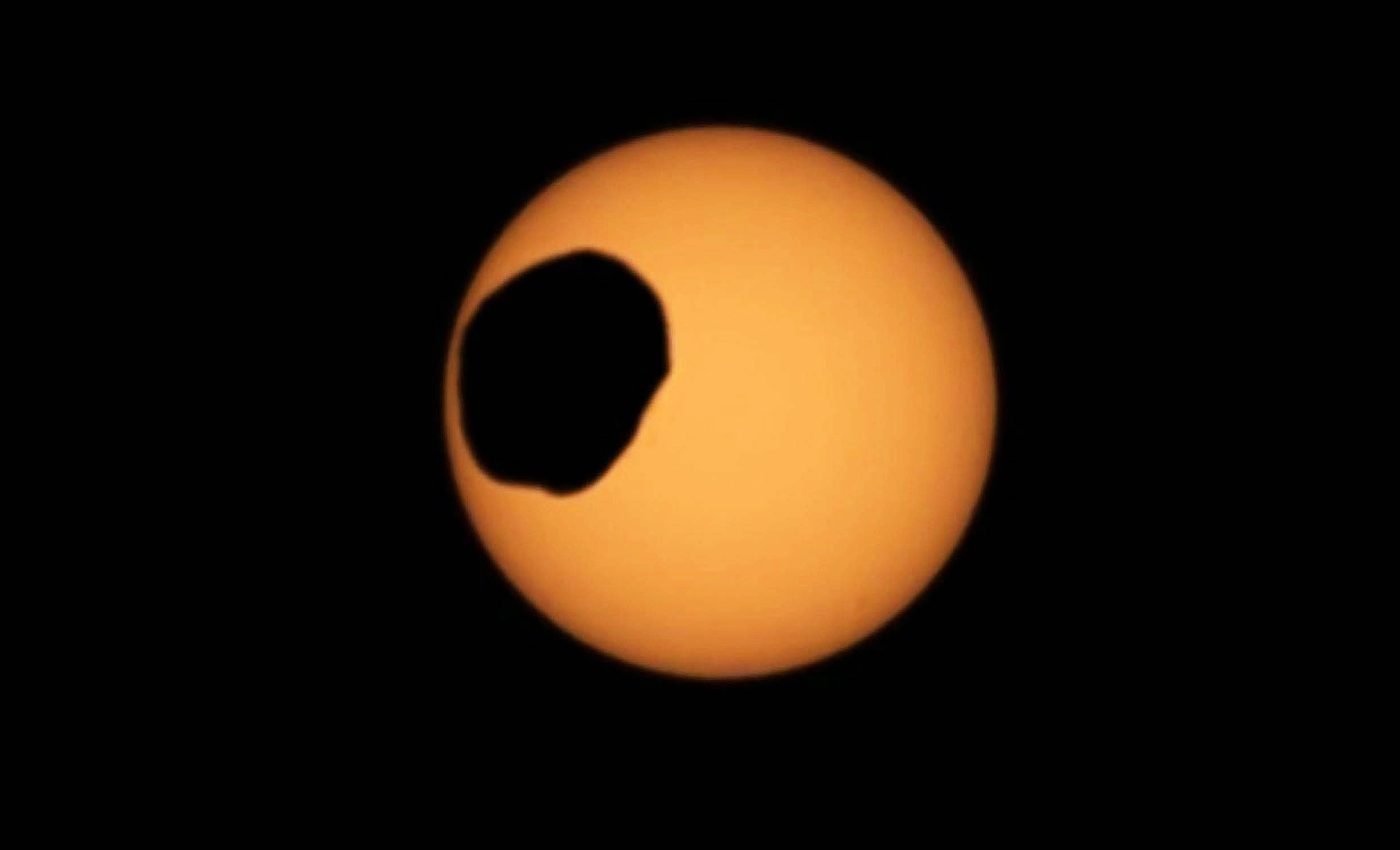
Mars' moon Phobos captured eclipsing the Sun from the Martian surface by Perseverance rover
Mars and its tantalizing mysteries have spurred many space missions, each one revealing something new and compelling. NASA’s Perseverance rover has been a prolific source of remarkable discoveries surrounding Mars and its moons, Phobos and Deimos.
One such spectacle happened on September 30, 2024. From its unique vantage point, Perseverance captured Phobos sliding right in front of the Sun.
“From its perch on the western wall of Mars’ Jezero Crater, NASA’s Perseverance rover recently spied a ‘googly eye’ peering down from space. The pupil in this celestial gaze is the Martian moon Phobos, and the iris is our Sun,” said NASA.
Phobos eclipses the Sun
Phobos is a rather unassuming celestial body when you consider the company it keeps — sharing Mars’ orbit with its twin moon, Deimos. These two moons are the least massive in the solar system.
Despite its size, Phobos has a rather significant role. It casts its shadow right across the Martian surface as it orbits the planet.
This happens because Phobos orbits exceptionally close to Mars — closer than any moon to its parent planet in our solar system.
This close proximity results in swift orbits, each complete revolution around Mars taking merely 7.6 hours.
And it was during one of these quick orbits that Perseverance caught the eclipse as Phobos transited across the Sun.
Perseverance, equipped with its Mastcam-Z, documented the Martian landscape in detail and captured the fleeting yet awe-inspiring event of Phobos crossing the Sun.
Despite its small size, the moon partially obscured our star, creating an impactful and mesmerizing visual effect.
But, rather than just a beautiful cosmic spectacle, it allowed scientists a unique opportunity to explore deeper into the workings of the Martian system.
Interactions between a planet and its moon
By capturing spectacular visuals like the Phobos transit, Perseverance holds significant scientific value.
By observing these occurrences over time and comparing images and videos of earlier Phobos transits, scientists can get a better understanding of the moon’s evolving orbit.
The experts discovered that Phobos is gradually moving closer to Mars. In about 50 million years, it is expected either to collide into Mars or disintegrate.
Studying these developments helps scientists comprehend the long-term gravitational interactions between a planet and its moon, contributing to our understanding of planetary evolution.
Perseverance rover mission
The Perseverance mission goes beyond observing mesmerizing eclipses. The rover’s primary objective is astrobiology, actively searching for signs of ancient microbial life on Mars.
It studies Mars’ geology and climate. The rover analyzes Martian rock formations, serving as a crucial link in understanding Mars’s past when the planet’s conditions could have been suitable for life.

But that’s not all. Perseverance is also responsible for collecting rock and soil samples from the Martian surface for future analysis back on Earth. It’s a part of a mission being developed in partnership with the European Space Agency (ESA).
Once these materials are transported back home, scientists can perform meticulous laboratory experiments not feasible with the rover’s onboard instruments.
Imaging the Sun’s eclipse with Phobos
The Mastcam-Z on Perseverance was instrumental in capturing the stunning image of Phobos crossing the Sun.
This advanced imaging system was developed collectively by Arizona State University, Malin Space Science Systems, and the Niels Bohr Institute.
The camera holds a vital position in making space exploration relatable by capturing visually captivating events that inspire public engagement.
NASA’s vision: Moon to Mars
The Perseverance mission forms a part of NASA’s broader exploration strategy, “Moon to Mars.”
The rover is not merely bound by scientific objectives but is also laying the groundwork for future space travel.
Perseverance tests out new technology that could be beneficial for future astronauts, such as systems that could generate oxygen from the Martian atmosphere.
The footage of the Martian moon as it eclipses the Sun is a reminder of the vastness and the wonders of space exploration.
As Perseverance reveals the secrets of Mars, it helps us learn about our universe and brings us closer to visiting the Red Planet.
Image Credit: NASA/JPL-Caltech/ASU/MSSS
—–
Like what you read? Subscribe to our newsletter for engaging articles, exclusive content, and the latest updates.
Check us out on EarthSnap, a free app brought to you by Eric Ralls and Earth.com.
—–













